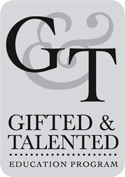
LETTER ERRONEOUSLY SENT TO PARENTS
GRANTS ELIGIBILITY TO EVERY STUDENT
THAT TOOK TEST FOR G&T PROGRAM
By Alan Z. Forman
What does it mean to be “gifted and talented” in Howard County? Is every student in the public school system a G/T scholar?
That’s the question parents of Howard County elementary and secondary schoolchildren were asking this week, as the county’s public school system mailed a letter to parents of students who had taken a test for eligibility to Howard’s Gifted & Talented Education Program telling them their child had “qualified.”
The county is famous for attracting families from more expensive areas in Maryland who move to Howard because it’s known for having excellent public schools combined with more affordable living arrangements. But does that translate into all its students being gifted and talented? and far above the national average intellectually and academically?
The letters mailed a week ago Thursday to parents of learners who are not way above average would make it seem so. But the information contained in the letters, telling all parents their children had been accepted into the G&T Program, was incorrect.
“We had a quality control error, a coding error,” the county school system’s director of communications told Voice of Baltimore in a telephone interview at week’s end.
“All of the kids who tested got a letter saying their ‘cut score’ had met the requirement for G/T eligibility,” Rebecca Amani-Dove explained.
STUDENTS BELOW THE CUT SCORE
There were two letters — “texts,” she called them — “students who met the cut score” and “students below the cut score.” Only those students who voluntarily took the test for acceptance into the program were affected.
But the “alternate text” letter — meant for students below the cut score — was never sent. Instead everyone got the letter telling them they had qualified for eligibility in the program.
According to the school system’s website, “The G/T Program seeks to recognize and develop talents in advanced-level learners… [and] provides distinctive services for [such students] in academic areas and the visual and performing arts. Program services offer accelerated and enriched learning opportunities, [with] program implementation [varying] at the elementary, middle and high school levels.”
Alternate routes to the program, other than the test, include parent and teacher recommendations and excellent performance/exceptional grades in schoolwork.
“We believe in using multiple measures to help parents make informed decisions about the appropriate placement for their child,” Amani-Dove said. “We want to make sure students are prepared to have a successful experience.”
Corrected letters were sent out Thursday, and the school system has “taken measures to make sure this won’t happen again,” she added. About 2,200 — more than two-thirds — of the 3,500 letters that went out were incorrect, she said.
NOT AWARE OF ANY COMPLAINTS
Asked if many parents had complained about the error, Amani-Dove said she was “not aware of any complaints. The PIO office has not received any complaints from parents,” she said. However she acknowledged uncertainty as to whether or not the superintendent’s office had fielded any objections to the erroneous letter.
Affected parents were notified of the error via email, she said, in the hope they would receive the heads-up in advance of getting the erroneous letter which went out via snailmail.
“We automated the process” of notifying parents using computer technology, she said. “It used to be a manual process [and] the intent of automating the process was to improve it.
“We have already reviewed the process, and have put in place some process improvement,” she explained.
“Our hope was that the electronic process would get to most parents first — so they would know [some of] the letters were inaccurate before receiving them.
“However we know some parents already received letters [prior to the emailing of the electronic explanation].”
The test the students took was the School and College Ability Test, known colloquially as SCAT, a standardized test conducted in the United States that measures math and verbal reasoning abilities in gifted children only.
According to Wikipedia, “Qualification for the test requires a 95th percentile or higher score on a national standardized exam or a teacher recommendation with exceptional grades.”
alforman@voiceofbaltimore.org





